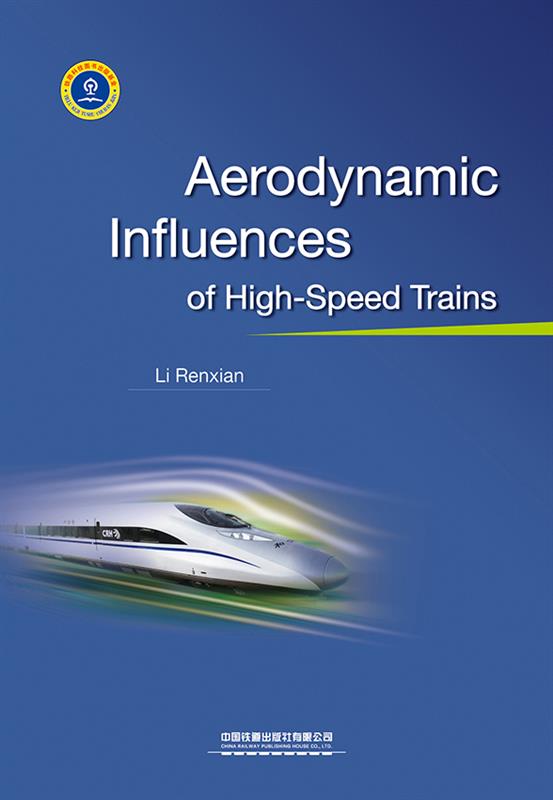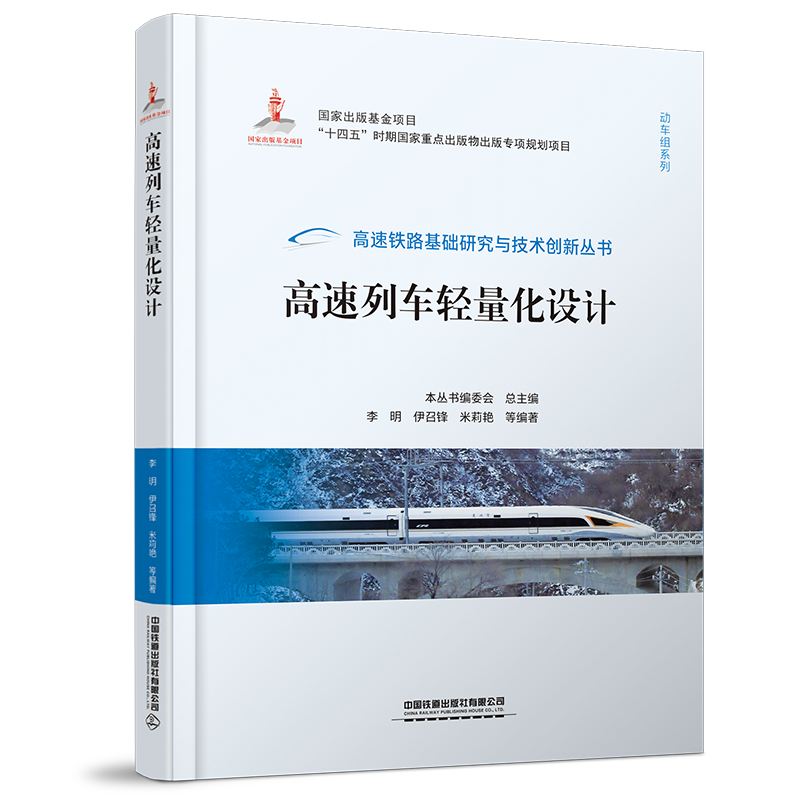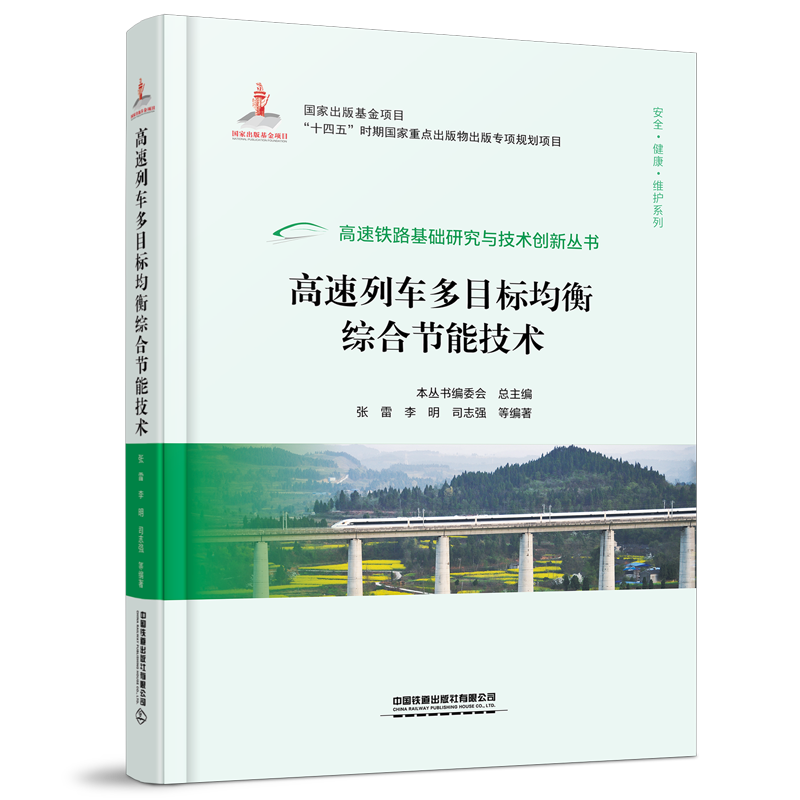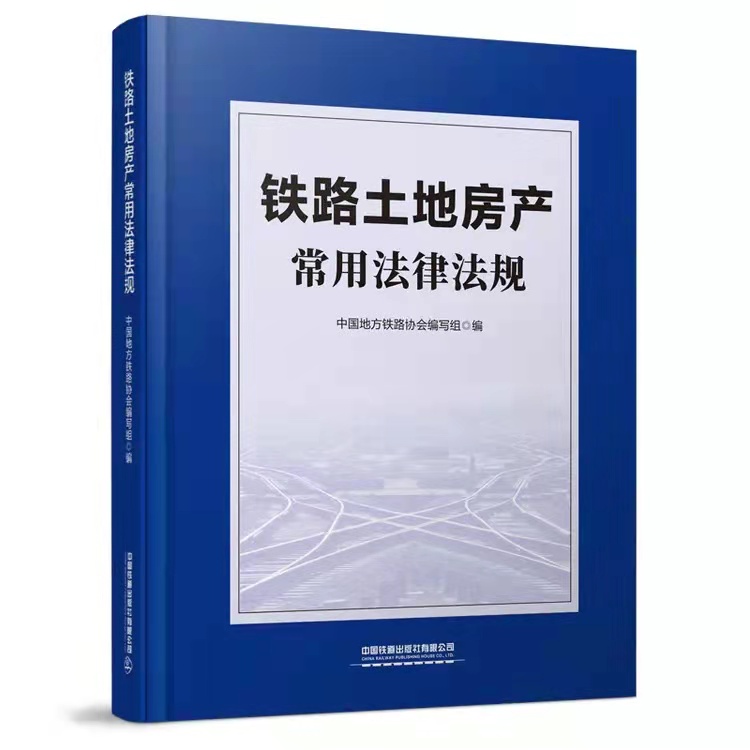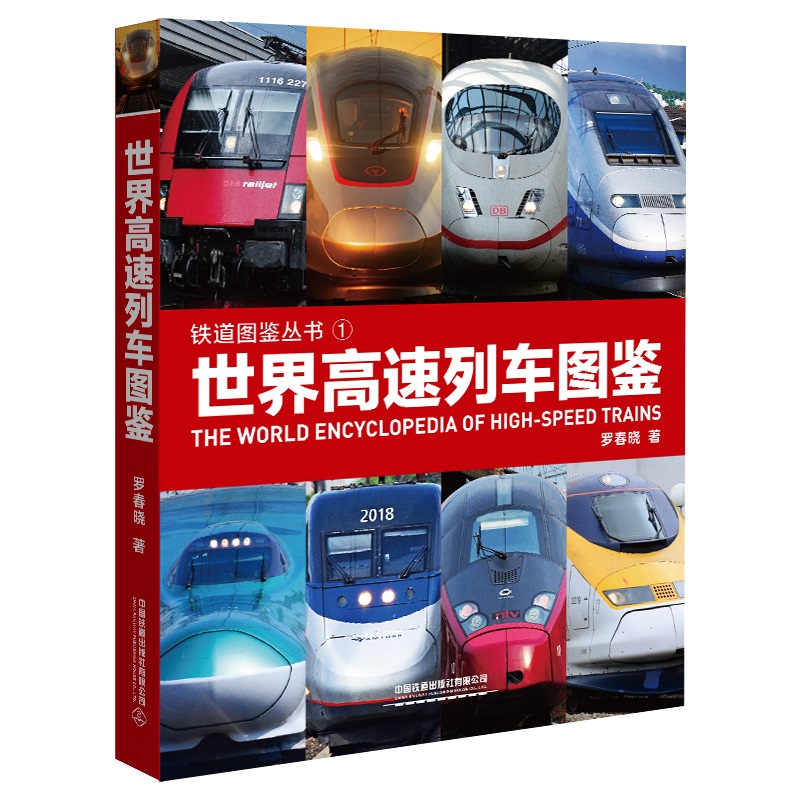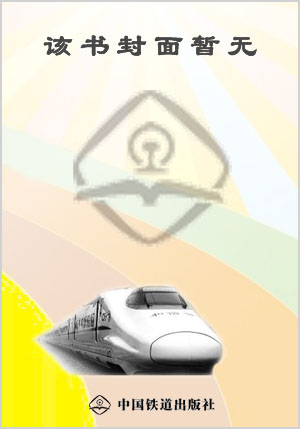Aerodynamic Influences of High-Speed Trains
书 号:9787113263737
丛 书 名:无
作 者:李人宪
译 者:
开 本:16开
装 帧:精装
正文语种:英文
出 版 社:中国铁道出版社有限公司
定 价:180元
-
内容简介
Withthecontinuousimprovementoftheoperationspeedofhigh-speedrailways,theadverseeffectsoftheaerodynamicimpactontralnoperation,tunnelmaintenance,railwayserviceliteandthesafetyofroadsidepersonnelareincreasinglyprominent.Thisbookusesnumericalcalculationmethodstodiscussnineaerodynamicproblemnsofhigh-speedtrainthataredifficulttostudyusingrealmeasurementandwindtunnelmodeltestmethods.
Thisbookcanbeusedasareferenceforteachers.studentsanddesignresearchersinthefieldofhigh-speedtrainaerodynamics. -
前言
Since the world's first high-speed train with 210 km/h speed debuted in Japan in the 1960s, high-speed railways and high-speed trains have been successfully built and operated in many countries. Because of its large transport capacity, low energy consumption, good comfort of ride and high operation safety, more and more countries are taking considerations of building high-speed railways. At present, more than 10 countries or regions have operating high-speed trains, and more than 20 countries have high-speed railways constructed or under construction.
Today, China's high-speed railway construction and high-speed train manufacturing hold a pivotal position in the world. China ranks number one in both the operating mileage and mileage under construction in the world. China also has a very large scale production of high-speed trains. Almost all of more than 3000 high-speed trains operating on China's high-speed railway now are domestically manufactured. Needless to say, China is taking a three-step rout for its development of high-speed railways and trains, namely, importing, understanding and absorbing, and re-innovation. This route in one hand led to high starting point, fast development, and rapid large-scale production. However, on the other hand, it might have also led to lack of basic theoretical research and understanding of the original design. Comparing to the leading countries of high-speed railway technologies in the world, such as Japan, France, Germany and so on, China still has to fill the gap of establishing standards for high-speed train manufacturing and operation. This gap has also been obstructing China from entering the world market of high-speed railways and high-speed trains. In the scope of aerodynamics, a number of design standards are either missing or to be developed. A few examples include: the standard of safety distance for roadside person as train passing by, the limits of air pressure variation in the tunnel, the limits of air pressure change inside the passenger car, air quality standards of air-conditioned passenger car, the limits of temperature variation in trains designed for different regions and different seasons, thermal comfort evaluation standard inside the passenger car, the limits of noise levels inside the passenger car, the limits of aerodynamic noise outside the train; operation stability criteria of the train while running in crosswind, the aerodynamic loading standards for sound barrier designs and so on. The development of these standards involve the understanding of not only the operation of train, but also the limits of the operating environment. It also depends on the technology of manufacturing, ergonomic criteria, and even the differences in ethnic, religious, cultural and many other aspects. Nevertheless, it is with crucial importance that we understand the aerodynamic interactions among high-speed trains, people and the environment. This is the prerequisite of establishing standards relevant to the aerodynamics of high-speed trains. The work in book attempts to find the patterns of aerodynamic load of high-speed trains via large amount of computational analysis.
The research methods of high-speed train aerodynamics include theoretical analysis of simple (simplified) model, analysis of surveyed (measured) data during train operation, analysis of experimental data from wind tunnel model or water tank model and numerical calculation and analysis of hydrodynamics control differential equation. The theoretical analysis method has been used in the early research of high-speed train aerodynamics and is less used nowadays. Its analysis results can only be used for qualitative understating due to its over-simplified model and large deviation from the actual shape, operation and environmental conditions of the high-speed trains. The other three research methods are commonly used today. This book uses the method of numerical calculation of hydrodynamics control differential equation and discusses about nine aerodynamics problems of high-speed train that are difficult if not impossible to using real train measurement or wind tunnel model test methods. The nine aerodynamic problems are (1) the pressure wave generated when two trains traveling at opposite direction meet in open line, (2) the pressure wave generated when two trains traveling opposite direction meet in a tunnel, (3) aerodynamic forces generated when two trains traveling opposite direction meet and pass each other, (4) aerodynamic effect of a train passing through a tunnel, (5) aerodynamic effects of train-induced airflow on human body, (6) the effect of crosswind on the running train, (7) the effects of train-induced airflow on the windshield or sound barrier along high-speed railways, (8) the internal flow field of high speed air-conditioned passenger cars and (9) external aerodynamic noise of high-speed train. In addition, this book is written on the basis of the Chinese version of the book in 2016. Some new content has been added to Chapters 1, 2, 3, 5, and 10. The author hopes that this is of some help to the development of relevant standards and to young professionals who just enter this field, and consequently to promote the research and the development of the field of high-speed train aerodynamics.
Certainly, this book does not cover all the topics of high-speed train aerodynamics. Subjects such as aerodynamic interactions between high-speed train and various types of bridges, the effects of interactions between high-speed train-induced airflow and rain or snow on the operation of the trains, are not included in this book. Additionally, limited by the available computation power, the work in this book is far from perfect. We only analyzed the pressure fluctuations and aerodynamic forces when two trains meet in short tunnels, while the case in long tunnels may be different. We only analyzed the effect of crosswind on the running trains under the extreme condition (when the direction of the wind is perpendicular to the traveling direction of the train), while the cases with other directions of the wind are not discussed. The influence of dust and particles in wind-blown environment to the air quality inside the train is also worth discussing. Also worth pointing out, the conclusions in this book is only represent the author’s own opinion. Some of the calculated results are calibrated with the measurement results, while the other calculation results in this book have not been benchmarked to field measurements. Limited by the computational power, some of the numerical mesh of computational models may not be divided to the ideal fineness. The test of mesh number independence is performed on the calculation model when possible. However, limited to the computing power, there are also computational models that cannot be tested for mesh number independence (such as the calculation of external aerodynamic noise and of propagation of pressure wave in very long tunnel). Hence, the results presented may not be accurate enough, and the author can even get to incorrect conclusions without realizing it himself. Therefore, I sincerely invite readers of this book and area experts share your expertise and give your comments, criticism and suggestions.
This book would not have been possible without the support and help of my teachers, colleagues and students. First of all, I would like to thank my PH.D adviser prof. Liu Yingqing. He led me into the research area of high-speed train aerodynamics. Secondly, I would like to thank prof. Zhang Weihua who was the director of Traction Power State Key Laboratory of Southwest Jiaotong University. In the year of 2005, he supported me both with the equipment and the financially during the very difficult time of my research so that my research work can be sustained. Of course, I would also like to thank my graduate students as they have completed a considerable portion of the calculation presented in this book. Zhang Shu, Zhao Jing, Liu Jie, Guan Yongjiu, Wang Mingming, Zhao Jiwei, Zheng Zhengyu, Ye Kun, Qi Zhendang, Chen Lin, Xiao Rui, Yuan Lei, Ding Hao, Yao Shu, Kang Jian, Cui Pengxiang, Liu Jizhou, Lu Xiaoliu, Liu Congyan, Yu Runzhi, Liu Jintong, Meng Dongxiao, Yang Jun and more have contributed to this book. all made their contribution to this book. Many times, it is through the discussion and argument with my students that makes the objectives of the research better defined and the contents of the study more clear. Last but not least, I am very grateful my family for toleration of me spending most of my time in front of the computer rather than with them.
This book was made possible by the funding support from the Railway Science and Technology Book Publishing Fund. Thanks to academician of Chinese Academy of Engineering Liang Wenhao for writing the forward of this book. Also appreciated are editors of China Railway Publishing House, Huang Lu, Zhao Jing and Wang Mingrong for their massive editing work for this book.
-
目录
1. Introduction
References
2. Change of the Pressure Wave as Two Trains Opposite Meeting Pass on Open Line
2.1 Problem Statement
2.2 Research Methods
2.3 Analytical Model
2.4 Model Verification
2.5 Calculation and Analysis
2.6 Comparison of the Pressure Waves Generated by Different Shapes of the Train Head
2.7 Conclusions
References
3. Pressure Wave Generated as Two Trains Opposite Meet in a Tunnel
3.1 Problem Statement
3.2 Research Methods
3.3 Three-Dimensional Simulation Analysis
3.4 Estimation of the Maximum Negative Pressure
3.5 Tunnel Critical Length and the Most Unfavorable Length when Two Trains Meet
3.6 Conclusions
References
4. Aerodynamic Forces Generated as Two Trains Running in Opposite Directions Meet
4.1 Problem Statement
4.2 Research Methods
4.3 Computation Model and Basic Assumptions
4.4 Aerodynamic Forces Generated as Two Trains Meet on Open Line
4.5 Aerodynamic Forces Generated as Two Trains Meet in a Tunnel
4.5 Conclusions
References
5. The Aerodynamic Effect of a Train Passing Through a Tunnel
5.1 Problem Statement
5.2 Research Methods
5.3 Analysis of Air Pressure Change as a Train Passes Through a Tunnel
5.4 The Most Unfavorable Tunnel Length as a Train Passes Through a Tunnel
5.5 Analysis of the Aerodynamic Effects of the Hood of the Tunnel
5.6 Aerodynamic Forces When a Train Passes Through a Double-Line Tunnel
5.7 Propagation of the Compression Wave in Long Tunnel
5.8 Conclusions
References
6. Aerodynamic Effects of Train-Induced Airflow on Pedestrians
6.1 Problem Statement
6.2 Research Methods
6.3 Analysis Models
6.4 Results Analysis of the Numerical Calculation
6.5 The Relationship of the Aerodynamic Force with the Train Speed and the Distance and Train Shapes
6.6 Conclusions and Suggestion
References
7. Impact of Crosswind on Train Operation
7.1 Problem Statement
7.2 Research Methods
7.3 Calculation Model and Train Operating Conditions
7.4 Crosswind Loads on Trains Without Windshields
7.5 Analysis of the Role of Windshields on Straight Railways
7.6 Analysis of the Optimal Height and Distance of the Windshield on Curve Railways
7.7 Conclusions
References
8. Aerodynamic Effect of High-Speed Trains on the Windshield or Sound Barrier
8.1 Problem Statement
8.2 Research Methods
8.3 The Aerodynamic Load on the Sound Barrier
8.4 Strength Calculation of the Support Structure of the Sound Barrier
8.5 Fatigue Life Estimation of the Support Structure of the Sound Barrier
8.6 Conclusions
References
9. Internal Flow Field of High-Speed Air-Conditioning Train
9.1 Problem Statement
9.2 Research Methods
9.3 Location of Fresh Air Inlets and Waste Exhaust Outlets
9.4 Calculation of Air Parameters in Passenger Car
9.5 Design Specification of Air Parameters and the Evaluation of Thermal Comfort in the Passenger Car
9.6 Comparison of Two Types of Air-Conditioning Systems
9.7 Impact of Sudden Changes in External Pressure on the Interior Environment of the Carriage
9.8 Conclusions
References
10. External Aerodynamic Noise of High-Speed Train
10.1 Problem Statement
10.2 Research Methods
10.3 Numerical Analysis of External Sound Field of High-Speed Trains
10.4 The Far Field Aerodynamic Noise Including Quadrupole Sources
10.5 Calculation of the Sound Field caused by Micro-Pressure Wave
10.6 Conclusions
References
Appendix A: Tables Index
Appendix B: Illustration Index
Appendix C: Related papers published by Author in Recent Years -
作者介绍
李人宪,1982年毕业于西安交通大学,获学士学位;之后到西南交通大学任教。1988年获工学硕士学位,1998年获工学博士学位。2002~2003年在瑞士联邦苏黎世理工学院做访问学者,2005年受英语皇家学会资助在剑桥大学作短期科学研究。现任西南交通大学机械工程学院教授,博士研究生导师。主要从事内燃机性能和车辆空气动力学领域的研究,主持完成多项国家级、省部级和企业委托的科研项目。已发表研究论文100余篇,主编出版图书4本。 -
编辑推荐
随着高速列车运行速度的不断提升,气动作用对列车运行等方面的不利影响日益凸显,高速列车气动影响的研究成为推动我国高速铁路建设又快又好发展亟待突破的重大课题。在此形势下,本书作者,利用空气动力学原理,针对高速列车的各工况做了大量的研究与试验,以研究成果指导高速列车外形设计及隧道等工程设计,达到高速列车提速、安全双赢目标;并将所得成果分类、总结,用全英文著成此书,以期可以对内对外共同分享。
本书为全英文专著,是在2016年由中国铁道出版社出版的科技专著《高速列车气动影响》的基础上添加近几年的研究成果著作而成。2016年版《高速列车气动影响》由梁文灏院士作序,在“铁路科技图书出版基金”的资助下出版。随着中国“一带一路”建设工作的推进,高速铁路走出国门的项目越来越多,作者将《高速列车气动影响》翻译成英文,并加入近几年的最新研究内容,希望能够助力“一带一路”沿线铁路工程师的培训和在华留学的车辆工程研究生的学习。
本书共分为10章,详细阐述了明线会车压力波变化规律、隧道会车压力波、会车过程的气动作用力、列车通过隧道的气动作用、列车风对路边人员的气动作用、列车的横风效应、高速列车对挡风墙或声屏障的气动作用、高速空调客车内部流场、高速列车外部气动噪声等9个高速列车空气动力学方面的问题,对每个问题的论述均包括研究方法、三维模型、数据仿真、研究结果,论述均能做到观点鲜明、条理清晰、逻辑性强。本书的研究成果和针对当前高速列车设计中所遇问题提出了合理建议,可成为我国高速列车的气动优化设计和高速铁路安全运营改进非常有意义的参考资料;同时也能对我国高速铁路和高速列车相关设计标准的制定和推动我国高速列车空气动力学的发展产生积极的促进作用。
本书为英文版图书,获“铁路科技图书出版基金”资助。 -
书评书荐
-
附件下载
图书推荐
